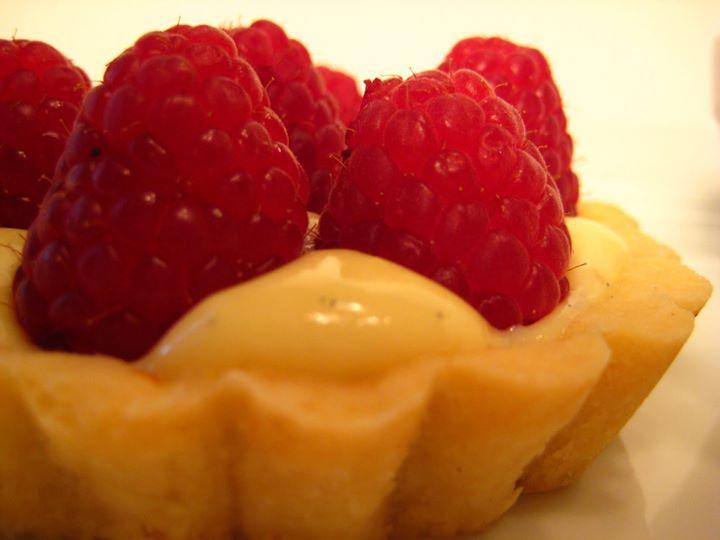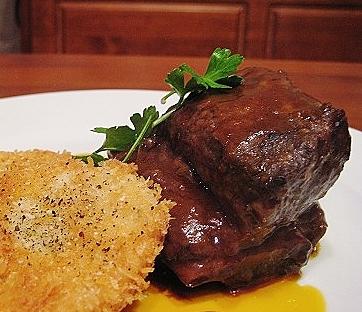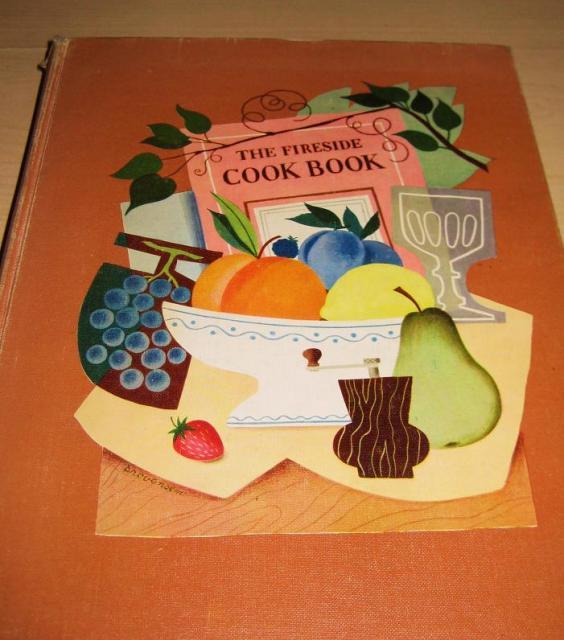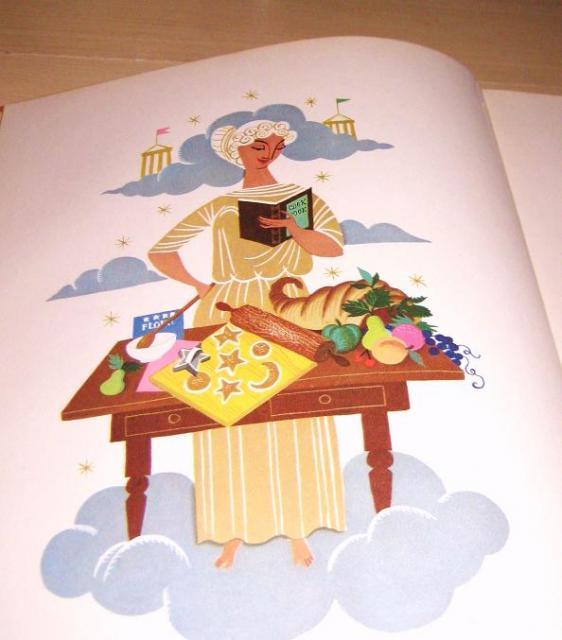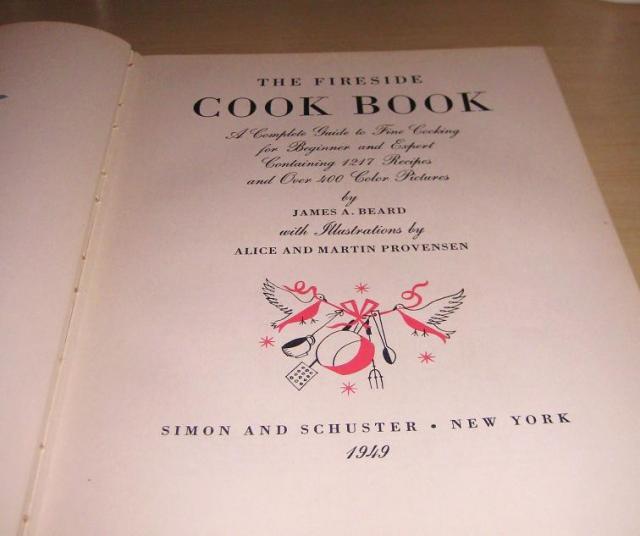-
Posts
5,035 -
Joined
-
Last visited
Content Type
Profiles
Forums
Store
Help Articles
Everything posted by David Ross
-
Back to the kitchen? To the library? Out for a bike ride? Watch less tv and do stuff? Read internet forums? Cooking shows were created for housewives who were home in the afternoon (before there was cable and VCRs) and were expected to cook. It's not too surprising that there are fewer of those shows as that demographic shrinks relative to the overall population. Now we have cable and DVRs and DVDs and video on demand and everything else: we can watch whatever we want, whenever we want. Everyone wants speed, convenience, entertainment, and vicarious thrills. It's on commercial tv, so it's driven by ads, which mostly means processed foods and family restaurants. They're not going to promote shows that say those things aren't needed. They want you to believe that cooking is best left to professionals and people in places you might never visit. As someone who has had the wonderful opportunity to cook on local, (and live), television and on PBS (national), I have a measure of experience to draw upon when these questions arise. You can read about my adventures cooking on television, here. Yet I think we have to have a respect for the history and tradition of where cooking on television began in order to judge where it is leading in the future. When you reflect upon the history of cooking on television up to the present day, I think you gain a greater appreciation and respect for the foundation the early cooks like Julia built, yet at the same time you don't rue the huge impact that the Food Network has had on television cooking programming in more modern times. Commercial television is a whole different ballgame than the cooking programs you see on PBS. As a traditionalist and a teacher, I of course find a comfortable home both cooking on and watching television programs on PBS. When the motivation is to teach first rather than be pushed by the rush to garner ratings points for advertisers, it allows for both the cook and the viewer to express their pure creativity and share the pleasure of food and cooking. Julia set that standard, and I should like to think the quality of her work lives on today in the minds of the cooks who appear on the cooking programming you see on PBS. True, the audience for the early cooking programs on television were primarily women as they held the vast majority of the demographic that did the cooking in the home and, by turn, women were the target audience of the advertisers. The early network morning shows were often sponsored by, (or the cooking segements were sponsored by), a food-related product. Much like the "Texaco Star Theater," program hosted by Milton Berle, cooking segments may have been sponsored by one advertiser, say "Elsie the Cow and Borden Milk." A local segement in Portland, Oregon, may have been sponsored by Alpenrose Dairy. The other fact to remember is that a number of the early cooking shows and segments appeared on the morning shows, which served as lead-ins to draw viewers to other programs on the networks. That basic format still follows today. The Today Show on NBC has a variety of lifestyle segments, including cooking, that are smattered throughout the show with news updates and interviews. But the primary format of the morning shows is to give a lure to the viewers to watch other NBC programming. For example you'll be given a two-minute tidbit on a consumer fraud story thinking you'll get more only to find Matt Lauer remind you to tune in at 9pm that evening for the full story on Dateline NBC. Of course, those early cooking shows on television were primarily geared toward selling a product, be it a cookbook, local event or coconut cream pie made with Elsie's condensed milk. The products are different today, but the format, selling something and using cooking as the vehicle, is the same as it was 50 years ago. The advent of cable opened a whole new window for cooks in terms of the variety of cooking programs on television, and, whether serious home cooks choose to admit it or not, the Food Network is largely responsible for the continuing popularity of cooking programming. Yes, they introduced us to the inane, sophmoric grammar of Ms. Rachel Ray and the grating laugh of Ms. Deen. But at the same time, Food Network turned on a whole new audience to cooking "meals in 30 minutes" and "gooey butter cake." As Martha would say, "that's a good thing." And then we evoled into another new world of cooking related media being sent via iPhones and YouTube--a "quick fix" if you will for a new generation of cooks whose patience doesn't allow waiting for, (and watching), a Saturday morning run of cooking programming on their local PBS Station. (Not to mention the suffering one endures during the annual Spring pledge break). PBS doesn't live alone in the world of quality television cooking programs today. There are a number of quality cooking programs that are currently running on the Cooking Channel and other cable networks also have and will offer quality cooking programs geared toward serious cooks. "Cooking with Heart and Soul" featuring Kylie Kwong, (Style Network, 2003), was a television cooking program with the passion and educational benefits of a program on PBS, yet with up-close, highly defined camera work showcasing exotic ingredients and a cool vibe and contemporary music to accent the cooking. That's not the typical style you'll see on PBS but cable networks are pulling it together today. And yes, we have Martha on Lifetime, in my view the leader of the pack in terms of the quality of what she teaches and how she teaches it. Her recipes are far less complicated than they were ten years ago, (not as many fussy dishes with foie gras and truffles), and her passion and fun in the kitchen shows through. So here we are today--a bowl of something for everyone, with every type of lettuce, radish, onion, vinegar, salt and pepper tossed in the salad. And a delicious salad it is. A taste for every palate if you will. One can only wonder what the future holds, and far be it from me to even venture into offering a prediction. (I don't own a cell phone if that gives you a clue). For me personally, my viewers and the people who I know share the same passion and joy that comes from cooking, I think the old guard will still stand, (PBS and some cooking on local television), while the e-applications will take the forefront. Who knows, maybe we will see "Modernist Cuisine" with Nathan coming to a station near you soon. (And a mobile application).
-
A bottle of Grey Goose and a bottle of Old Ezra 101 proof Kentucky Bourbon. I usually buy Maker's Mark, but thought I'd break away this time. Haven't tried the Old Ezra yet.
-
Nearly as bad as Bitchin Kitchen on Cooking Channel. Nearly.
-
I like two brands-Trident Seafood and Ocean Beauty, both based in Seattle. We can buy Trident brand at some markets in the Northwest and at Costco. Ocean Beauty is more widely available in supermarkets. Both companies offer a variety of frozen seafood, but I especially like their "fish sticks" made with Alaskan Halibut.
-
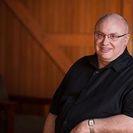
What did You Learn (To Cook) From Your Parents?
David Ross replied to a topic in Food Traditions & Culture
Of the many things that both my Mother and Father taught me how to cook- -Bacon. Yes, Mother taught me how to fry bacon. And one of my fondest food memories is that little tin can of bacon grease she kept on the counter. Owing in part to the German butcher where Mother bought her bacon, (thick, meaty and smoky), her bacon was always crisp yet never dried out. -Deviled Eggs and Hot Crab Dip. My Father taught me how to make deviled eggs using a recipe handed down from his Mother. He said he used to "dress-up" the eggs by adding some cayenne pepper or tabasco. And he always made a delicious hot crab dip during the Holidays using the first of the season Dungeness Crab we got off the Oregon Coast. He mixed it with cream cheese, mayonnaise, sliced almonds, green onions and lots of Worcestershire sauce. I was good hot, but even better when we ate it cold the next day on saltine crackers. -
Top Chef did come out after the original Iron Chef series and history actually records that cooking competitions on television, (i.e. Art Linkletter doing interviews of contestants at the Pillsbury Bake-off in the early days of television), are not a new concept. However, it seems to me that in this case, Top Chef All Stars and Chopped: All Stars are incredibly close together in terms of format and timing.
-
This morning I came across the new iteration of "Chopped" on Food Network-"Chopped: All-Stars." The Chefs included Robert Irvine, Anne Burrell and Duff Goldman, all Food Network "Stars" with their own shows. (You can read our discussion of Chopped: All-Stars here). After just a few minutes, a thought that has been at the back of my mind came to the forefront-is this another woeful attempt by Food Network to rip-off Bravo's "Top Chef?" I've been thinking about this issue for some time now and it seems as though "Chopped" and "The Next Food Network Star" are incredibly similar to "Top Chef." Is it just a coincidence? Is it a case of "we were first," or "no you weren't, we had the idea first?" Is Food Network tagging on to the success of Top Chef on Bravo along with a few jabs of "in your face?" While I'm not always fawning over "Top Chef" and I supply plenty of criticism for the often inane challenges they present to the cheftestants, (go here for a review of our current discussion of Top Chef All-Stars), at least a see some quality on Top Chef in terms of the Chefs in the competition, the level of the elimination challenges and the level of the judges on the panel. Seems like Food Network is just lagging way, way behind in terms of copying Bravo. What do you think? Is the "reality" of the situation that Food Network ripped off ideas from Bravo?
-
The other day I set out on a quest for some curing salt to use in a brine for corned beef. I typically buy my curing salt at one of two different large outdoor/sporting goods stores that are part of national chains. The two stores I visited have a focus on fishing and hunting. Typically outdoor stores have a large selection of different curing salts, brine mixes and spices. All I wanted was a small packet of curing salt, but everything on display came in a large box-curing salt, spice mix and in some cases, sausage casings included. Defeated, I stopped at a local grocery store to see if in a last ditch effort they had curing salt available. There, on the bottom shelf in the spice section was a display of bags of Morton "Tender Quick." I read the instructions, seemed simple enough. The ingredients were what I was looking for, sodium nitrate and sodium nitrite. Everything was in a 2lb. bag and it was far cheaper than the curing salt and brine mixes at the outdoor stores. I'm planning on using the Tender Quick to make corned beef, maybe a ham this Spring. Have you had any experience with using Morton Tender Quick?
-
I once saw a television interview with Julia Child where she admitted to a fondness for Cheetos Cheese Puffs. I'm sure it raised some eyebrows from the food elite who probably felt it sacrilegious that a noted French Cookbook Author would gorge on commercial cheese puffs. Personally, I don't think one's personal indulgences frame who they are as a cook or Chef. Have you heard of other Chefs who have a guilty pleasure for junk food? Would Thomas Keller even eat a Dorito?
-
Like a lot of us, I keep the odd bottle or bag of commercial bacon bits in the door of the fridge for emergencies, or, like tonight, when I'm lazy. Tonight I'm making some stuffed, baked potatoes but I didn't want to take the time to saute some real bacon and then break it into bits. I'm using Hormel brand "Real" bacon bits with 50% less fat "than USDA Data for Pan-Fried Bacon." They actually taste o.k., albeit a bit heavy on the salt and I don't mind the fake smoke flavor. My main problem is that the bacon is almost ground rather than cut into bits, and the whole lot sort of clumps together. I'm sure it will be passable for tonight's potatoes. Are there any decent commercial brands of bacon bits out there?
-
I'm starting to think about this year's Easter Ham. For a few years I've been toying with the idea of braising the ham in Coke. (Pepsi not allowed). I've seen a number of recipes that call for either braising the ham in Coke, or glazing the ham with a paste made with Coke and brown Sugar. Have you ever cooked a ham with Coke? Is it best to use a basic smoked, bone-in ham or will a real Kentucky "country ham" work?
-
Speaking as a consumer, it's not at all hard for me to see Subway surpass McDonald's in terms of the perception of the quality of the food. Subway hit on what would become a trend by turning away from burgers and fries, (i.e. Quizno's, Qdoba), and going with sandwiches which, for the most part, are perceived as "healthier." The advertising campaigns that one could lose weight while still eating "fast food" certainly were a boost to their business. It seems as though McD's was slow to get on the bandwagon with revising their menu and scuffing away the beef fat for the fries. While I will forever crave a Big Mac, I'd choose Subway twice over McD's.
-
Short Ribs with Crispy Potato Pancakes- This is a very easy recipe that works well for both short ribs and pot roast or any cut from the chuck. It's best to start the day before service so the ribs have time to braise, settle and then come back to heat. Just season the short ribs with salt and pepper, dust with flour then sear in oil in a casserole pot until browned. Remove the short ribs and in the pot add carrot, celery, onion and garlic and saute until tender. Add some bay leaf, peppercorns and maybe some allspice berries. Add a few tablespoons of flour and stir to coat. Add red wine, beef stock and some tomato paste. Rest the short ribs on top of the vegetable mixture, cover and oven-braise at 250 for about 8 hours. Cool, then the day of service bring back to heat in a 300 oven. Skim the sauce and serve. The potato pancakes aren't the traditional version. I used mashed potatoes mixed with chopped onion, form them into little patties, dip in egg then dip in panko and fry until brown. Sorry, forget to give you a photo of how tender the meat was when I tucked into it. I was so hungry after waiting two days for these short ribs I couldn't resist.
-
Asparagus. It's "pointless" to even buy and even more inane to cook with shriveled, "unfresh" asparagus.
-
Are we confirmed for August 4-7? I'm ready to look at making some reservations for my flights and hotel. Any suggestions on a primary hotel for those of us coming from out of town?
-
Spaghetti Carbonara Spaghetti (although any dried pasta you have in the cupboard will work) Bacon Egg Parmesan Butter If you have it and want it: Parsley Cream
-
I guess we've both been unlucky. The profiteroles at Bouchon in Las Vegas, (which some rave about), fall into the C- category. The pastry is properly baked and is light yet has a delicate crunch. No problems there. Yet everytime I've ordered the profiteroles the ice cream has been hard as a rock, a texture that basically creates a cement ball that rolls out of the pastry. Then they drench the whole lot with hot chocolate sauce and the pastry gets soggy but the ice cream cement is still hard as a rock. I've had the dish more than a few times and always been disappointed.
-

"Modernist Cuisine" by Myhrvold, Young & Bilet (Part 2)
David Ross replied to a topic in Cookbooks & References
So true, and the association between modern cuisine and art is also comparable to American "Modernist" painters like Frank Stella, Jasper Johns and Jackson Pollock whose works were initially written-off by formal critics in a manner similar to the criticism that the French Impressionists received a generation earlier. -
Today the IACP, (International Association of Culinary Professionals), announced their 2011 Award Nominees. Dorie Greenspan's "Around my French Table," is a finalist in the Food Photography and Styling category. The full list of award finalists can be found here.
-
I have a number of books by Beard in my personal collection. The most cherished cookbook being a first edition of "The Fireside Cookbook," Simon and Schuster, 1949. It's a special family heirloom if you will because it was my Grandmother's-who shared her strong Oregon heritage with Mr. Beard, also a native Oregonian. This is what Beard wrote about Globe Artichokes in 1949- "The globe-sometimes called the French-artichoke is in reality the bud of a thistle-like flower which is as decorative as the bud is palatable." Imagine such creative writing about an artichoke some 62 years ago.
-
While the sense of smell may be the primary facet of our overall sensory experiences, one could argue that strong scents like fresh-cut grass could overpower the subtle aroma, (and consequently the taste), of a fresh, local, seasonal tomato. I agree that innovative Chefs like Grant could find a measure of success in experimenting with "enhancing" the flavor of a local, seasonal tomato by first presenting the diner with the scent of the Earth from which the tomato was grown. Yes, that would be an interesting concept to explore and to compare the local tomato to the super-hydro-flavorless tomato. In the end, it seems to me that one shouldn't have to resort to experimentation in either masking or enhancing any sense to replicate what Mother Nature gives us naturally each season.
-
I've had Sauce Veloute served at Guy Savoy in Las Vegas. It was the sauce for a chicken dish where the whole bird had been studded with truffles just under the skin and then poached in a rich stock.
-
Recently, the 2011 James Beard Award nominees for Chefs, Restaurants and Restaurant categories were announced. On March 21, the nominees for the 2011 James Beard Journalism Awards will be announced. Yet the legacy Beard left behind is decidedly more than awards and dinners at the Beard House in New York. Beard was truly one-of-a-kind in terms of his impact on American cuisine and he left behind a rich legacy of teaching, writing and images that place him alongside other iconic figures--most noteably his dear friend Julia Child. I have my own personal reasons for celebrating the legacy of James Beard--our connection as native Oregonians and the foods we grew up with here. I've been a student of Beard's musings on food and cooking and his ability to turn the written word into a platform for his lesson plans on how to cook. Did James Beard leave a legacy that has had an impact on the way you cook and think about the foods we eat?
-
Last year I found two local farmer's who grow incredibly flavorful tomatoes--tasted like the ones my Father grew years ago in his backyard garden. And I have to laugh at the tag "hydroponically grown." In other words, a tomato grown indoors in a greenhouse, not in dirt, and feed a "diet" of infused water. What do they taste like. Weak tomato water.
-
A few years ago, for the most part, I stopped buying tomatoes "out of season." In other words, I quit buying tomatoes if they weren't grown locally during Mother Nature's natural growth cycle. While I am sure that the Producer's and Marketing Teams will tell us that tomatoes harvested in January are at the "peak of their flavor," is a tomato picked weeks in advance in preparation for a 3,000 mile journey really compare to the flavor of a local tomato in season? Sure, I tried the "tomatoes on the vine," the "salad" tomatoes, the "hydroponic" tomatoes and the "organic" tomatoes and while some of them had passable flavor, they never compared to the local tomatoes I buy in August. (I may buy a Roma tomato or two in December to slice and add to salad, but that's it). Right now we still have the remnants of last week's snow and a new dusting is expected tonight. Fresh, local tomatoes won't show up in our markets for at least 4 months around the end of June and the crop will last through mid-September. I gladly cook with quality canned tomatoes during the dormant months. (Just last week I made a delicious braised veal dish with canned San Marzano tomatoes). It begs the question; have you ever found a tomato "out of season" that compares to a fresh, local tomato "in season?"

